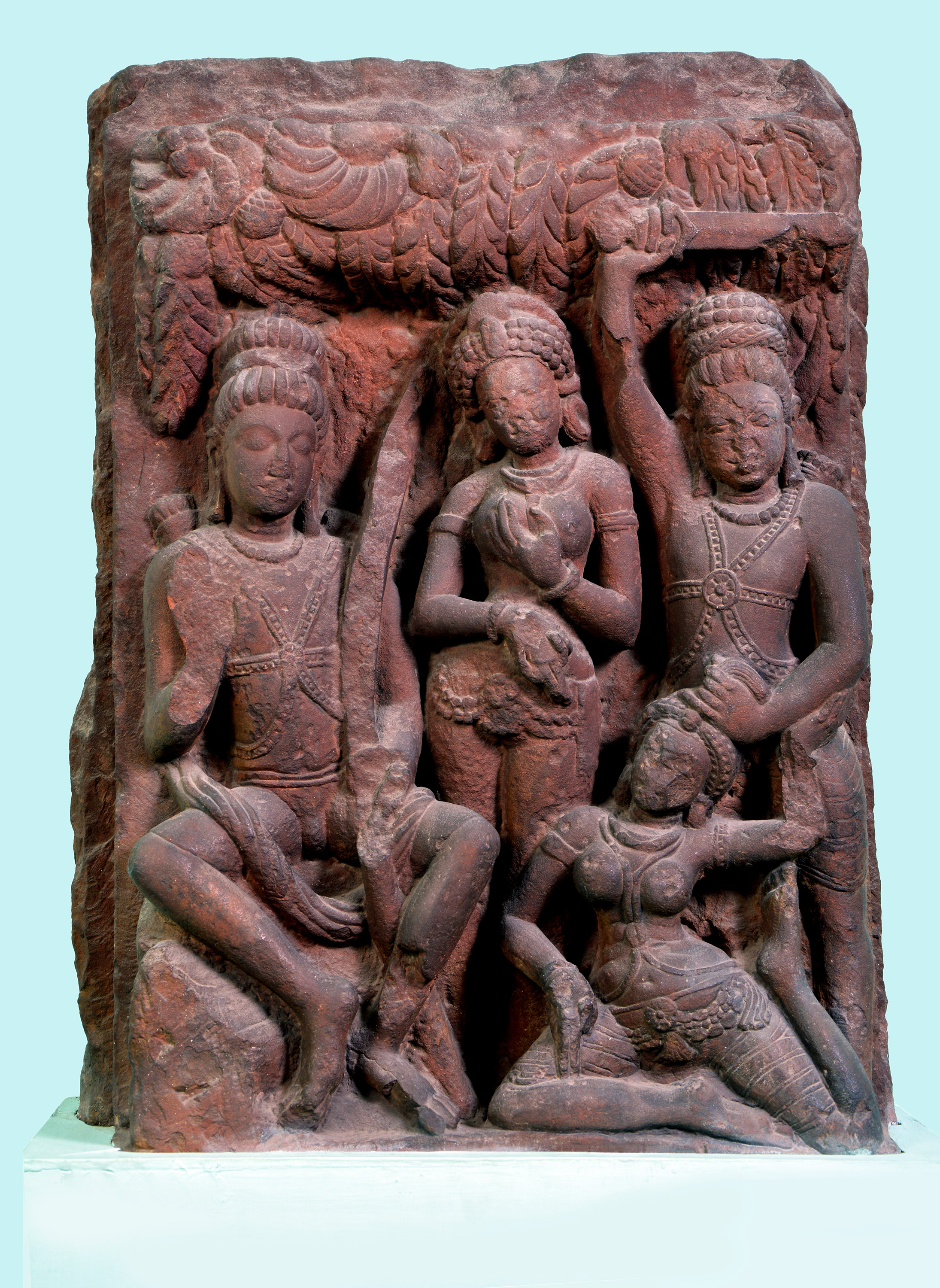Lakshman Disfiguring Surpanakha
Original Location: Deogarh, Uttar Pradesh
Present Location: National Museum, New Delhi
Date: 5th century CE
Period: Ancient
Material: Stone
Objects: Sculpture
Style: Gupta
Dimensions: H 82 x W 56.5 cm
Credits: National Museum, New Delhi
This remarkable stone sculpture depicting Lakshman disfiguring Surpanakha belongs to the Gupta Period and dates back to the 5th century. It finds its origin in Deogarh, Uttar Pradesh. It is 82 cm in height and 56.5 cm in width. This artefact is currently on display in the Gupta Gallery inside the National Museum, New Delhi.
Some of the Gupta kings proclaimed themselves as Bhagavatas who are the worshippers of Vasudeva Krishna. The links and associations between different Hindu deities emerge clearly in the sculptural programs of many temples. The Garuda became the emblem of the Gupta emperors since it was believed to be associated with Vishnu and from the times of Chandragupta II, the Gupta kings had the title Parama Bhagavata in their inscriptions.
This striking sculpture made of stone represents a story from the Ramayana. The sculpture depicts four figures. The one on the extreme left is Lord Rama who is seated peacefully and is holding on to his bow and arrow and yet not taking any part in the violence happening on the other side of the sculpture. He has a large sacred thread (called a janeyu) going across his body and he is shown wearing a lot of jewellery which subtly hints at the fact that he belonged to a royal family. In the centre of the sculpture is Sita who seems to be covering herself with her hand which is a sign of modesty and grace. On the left side of the sculpture is Lakshmana, Rama’s younger brother, holding a large sword in one hand and Surpanakha by her hair with the other hand. He is shown cutting off her nose which is depicted to be chipped off in this sculpture.
The worship of Vishnu avatars became increasingly popular under Gupta patronage. The avatars came to be conventionally counted as ten, out of which three were divine, namely Narayana, Narsimha and Vamana whereas the other seven were human. The seven human avatars include Dattatreya, Mandhatri, Rama (son of Jamadagni), Rama (son of Dasharatha), Vedavyasa, Buddha and Kalki. This sculpture depicts one of the stories from the life of Rama, the son of Dasharatha. The spiritual significance of the Ramayana can be indicated by its popularity and by the fact that there exist multiple versions of Rama story other than the most popular i.e. Valmiki’s Ramayana. A 12th century Tamil version by Kamban called the Ramavataram and a Buddhist version called the Dasaratha Jataka in Pali are a few of the versions of the Ramayana. There are also innumerable oral versions of the story. The Rama legend enjoys popularity across other parts of Asia including Tibet, Myanmar, Laos, Cambodia and Indonesia. All these versions have a different story structure in terms of the beginning and ending alongside characters and events shaped differently.
As per Ramayana, Surpanakha, Ravana’s widowed sister, comes across Lord Rama during her visit to Panchvati forest and immediately ends up falling in love with him. She disguises herself as a beautiful woman utilizing the power of Maya (illusion). She reaches Rama and he enquires about her. She praises Ram’s masculine beauty and asks him to marry her. He refuses and tells her that he is loyal to his wife Sita. Surpanakha, in a fit of anger, makes abusive remarks about Sita and threatens to eat her. Lakshman comes to Sita’s defence and cuts off Surpanakha’s nose in rage.
 Government of Indiaa
Government of Indiaa


 Recognizing the ongoing need to position itself for the digital future, Indian Culture is an initiative by the Ministry of Culture. A platform that hosts data of cultural relevance from various repositories and institutions all over India.
Recognizing the ongoing need to position itself for the digital future, Indian Culture is an initiative by the Ministry of Culture. A platform that hosts data of cultural relevance from various repositories and institutions all over India.
